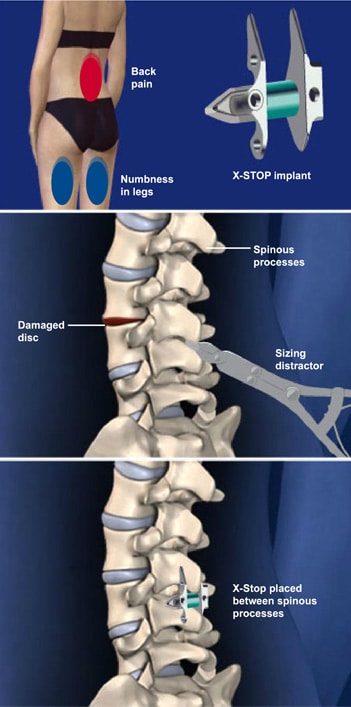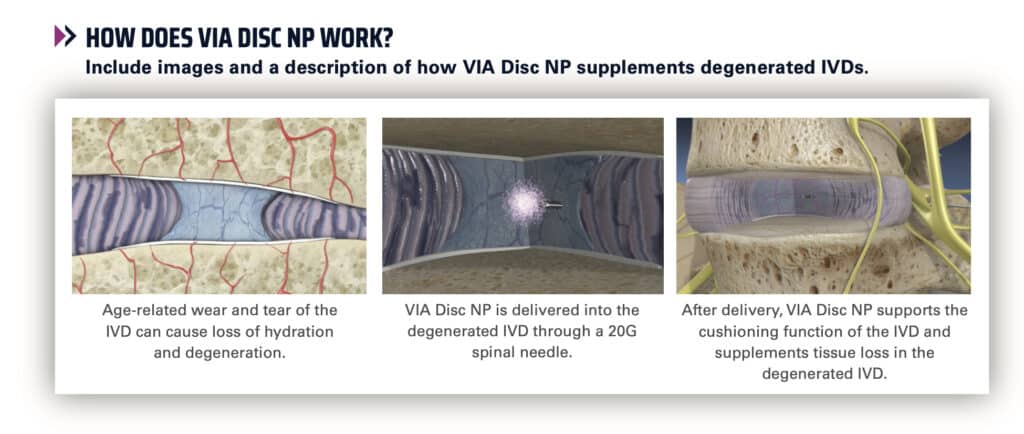Interspinous Process Decompression — X-STOP®
Lumbar spinal stenosis is an abnormality that constricts the space in which your spinal nerves grow. Most common in elderly patients, this disease often is caused by your spinal discs or ligaments compressing the root nerves in your spine, resulting in pain all the way down your legs.
Often, the conservative physicians at the Southeastern Spine Institute recommend anti-inflammatories, muscle relaxants, steroid injections, therapeutic exercise or even simply rest. If this conservative approach doesn’t work, minimally invasive back surgery may be the best solution.
The X-STOP® Interspinous Process Decompression system addresses pinched spinal nerves. Its advantage is that it requires only a small incision, which limits the damage to the surrounding tissue. The X-STOP® is a T-shaped device made of titanium (refer to the top illustration) that your back surgeon inserts between your vertebrae to hold them in place and relieve your pain.
OVERVIEW
Our board-certified surgeons usually perform this minimally invasive outpatient procedure while you are under local anesthesia and sedation. Once the titanium device is implanted in your spine, it relieves the pain and numbness in your legs caused by lumbar spinal stenosis. Interspinous process decompression is an alternative to a more invasive laminectomy or spinal fusion. The procedure is described below. Ask your surgeon about your risks and recovery expectations.
 1. PREPARING FOR THE PROCEDURE
1. PREPARING FOR THE PROCEDURE
You are placed face down or on your side. You are then given either general anesthesia or sedation with a local anesthesia. After the anesthesia has taken effect, your board-certified surgeon cleans and sterilizes the area.
2. ACCESSING THE SPINE
The surgeon makes a small incision in your lower back and then moves aside the ligaments by the spine to create an opening. The surgeon can now access the bony protrusions on the back of your spine called the spinous processes. The back surgeon locates the ones above and below the damaged disc.
3. IMPLANTING THE X-STOP® DEVICE
Guided by fluoroscopic X-rays, your surgeon opens a space between the two spinous processes. They will then insert the X-STOP® implant in the space they created, as in the bottom illustration. Sometimes, the surgeon may bend your back to create more space in the spine for the implant.
4. RECOVERING FROM THE PROCEDURE
The surgeon closes the incision and applies a bandage. You typically can leave our facility within 24 hours, but you will need time to heal. You should avoid strenuous physical activity for two to six weeks. You may need therapeutic exercise to build your strength.
SURGICAL PROCEDURES

